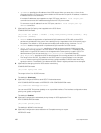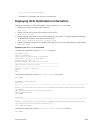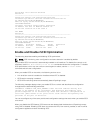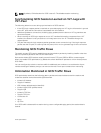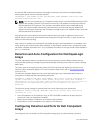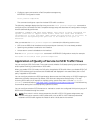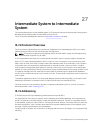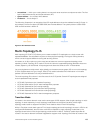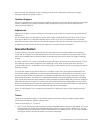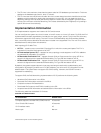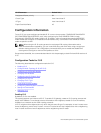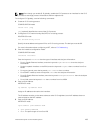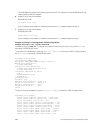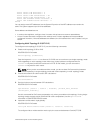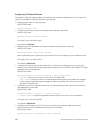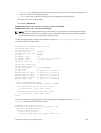area or domain are operating in multi-topology IPv6 mode, the topological restrictions of single-
topology mode are no longer in effect.
Interface Support
MT IS-IS is supported on physical Ethernet interfaces, physical synchronous optical network technologies
(SONET) interfaces, port-channel interfaces (static and dynamic using LACP), and virtual local area
network (VLAN) interfaces.
Adjacencies
Adjacencies on point-to-point interfaces are formed as usual, where IS-IS routers do not implement MT
extensions.
If a local router does not participate in certain MTs, it does not advertise those MT IDs in its IS-IS hellos
(IIHs) and so does not include that neighbor within its LSPs. If an MT ID is not detected in the remote
side’s IIHs, the local router does not include that neighbor within its LSPs. The local router does not form
an adjacency if both routers do not have at least one common MT over the interface.
Graceful Restart
Graceful restart is a protocol-based mechanism that preserves the forwarding table of the restarting
router and its neighbors for a specified period to minimize the loss of packets. A graceful-restart router
does not immediately assume that a neighbor is permanently down and so does not trigger a topology
change.
Normally, when an IS-IS router is restarted, temporary disruption of routing occurs due to events in both
the restarting router and the neighbors of the restarting router. When a router goes down without a
graceful restart, there is a potential to lose access to parts of the network due to the necessity of network
topology changes.
IS-IS graceful restart recognizes the fact that in a modern router, the control plane and data plane are
functionally separate. Restarting the control plane functionality (such as the failover of the active route
processor module (RPM) to the backup in a redundant configuration) should not necessarily interrupt
data packet forwarding. This behavior is supported because the forwarding tables previously computed
by an active RPM have been downloaded into the forwarding information base (FIB) on the line cards (the
data plane) and are still resident. For packets that have existing FIB/content addressable memory (CAM)
entries, forwarding between ingress and egress ports can continue uninterrupted while the control plane
IS-IS process comes back to full functionality and rebuilds its routing tables.
A new TLV (the Restart TLV) is introduced in the IIH PDUs, indicating that the router supports graceful
restart.
Timers
Three timers are used to support IS-IS graceful restart functionality. After you enable graceful restart,
these timers manage the graceful restart process.
There are three times, T1, T2, and T3.
• The T1 timer specifies the wait time before unacknowledged restart requests are generated. This is the
interval before the system sends a Restart Request (an IIH with the RR bit set in Restart TLV) until the
complete sequence number PDU (CSNP) is received from the helping router. You can set the duration
to a specific amount of time (seconds) or a number of attempts.
490
Intermediate System to Intermediate System



